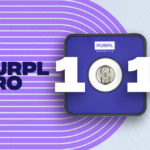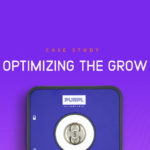The Purpl PRO by Purpl Scientific Inc. was launched in 2019 to provide affordable, instant, portable testing of potency in flower products. While there is significant usage of these measurements in cannabis cultivation, there is also a strong applicability in hemp. Hemp cultivation has surged after passage of the 2018 US Farm Bill legalizing hemp, particularly with the widespread media and interest in CBD as a potential therapeutic.
As initially defined in the Agricultural Marketing Act of 1946, hemp is defined as “Cannabis sativa L. and any part of that plant with a delta-9 tetrahydrocannabinol concentration of not more than 0.3 percent on a dry weigh basis.” This same characterization was carried through into the 2018 Farm Bill. So, for producers of hemp, there are two key metrics: 1) that the desired CBD concentrations are in-line with expectations (and generally maximized for profitability), and 2) that the plants they are growing do not contain THC greater than 0.3%.
So how is the Purpl PRO useful to hemp cultivators?
Of huge benefit is its instant measurement of CBD concentration. The primary reason smokable hemp commands a higher price than industrial hemp is this CBD concentration and, generally speaking, more is better. The Purpl PRO can measure CBD content between 2 and 15% (the upper limit will be increased over time as new strains with higher concentrations become available). This allows cultivators to quickly identify choice phenotypes, optimize growing and harvesting parameters to maximize CBD yield, and assure consistent and uniform product.
The Purpl PRO can also measure THC levels between 2 and 30%. What about that critical 0.3%, though? While it may be possible to refine the Purpl PRO to measure down to ~1%, it just can’t go much lower and still be accurate. This is due to the science of the near-infrared spectroscopy (NIR) we use. Rather than provide a 0.3% measurement that could really be 2.3% with our margin of error, Purpl Scientific chose to limit the readings to 2% because that is what the science allows.
But can’t labs and other devices measure 0.3% accurately? Yes and no. Potency self-testing products sometimes claim the measurement can be made, but most or all have a significant error level that must be taken into account, as we note above. Lab tests rely on gas chromatography (GC) or liquid chromatography (LC, also HPLC, UPLC), which require careful maintenance, skilled operators, and consistent protocols of use, and can certainly achieve the accuracy required to determine a 0.3% THC level. Yet most state legislation lacks these consistent protocols, and they vary between states, causing the potency result to vary as much as 30-40% on the same sample measured in two different labs.1 Which means that a sample that passes testing in one lab might not pass in another.
But measuring THC is still valuable to the hemp cultivator. Testing flowers early in the grow with the Purpl PRO is much like the proverbial “canary in the coal mine,” indicating when a plant is “hot” and expressing THC >2%. The portable nature of the Purpl PRO allows it to be easily carried anywhere plants are growing, indoors or out, so “hot” plants can quickly be identified and removed. This can also be helpful in pheno-hunting, to identify those cultivars that don’t perform as expected. And the ability to pre-test flower before it is sent for certified testing provides yet another utilization of the Purpl PRO, to ensure a representative sample is selected and to provide a first benchmark of the expected potency results.
[1]Jikomes N. and M. Zoorob, “The Cannabinoid Content of Legal Cannabis in Washington State Varies Systematically Across Testing Facilities and Popular Consumer Products,” Scientific Reports 8, 4519 (2018). https://www.nature.com/articles/s41598-018-22755-2.pdf






